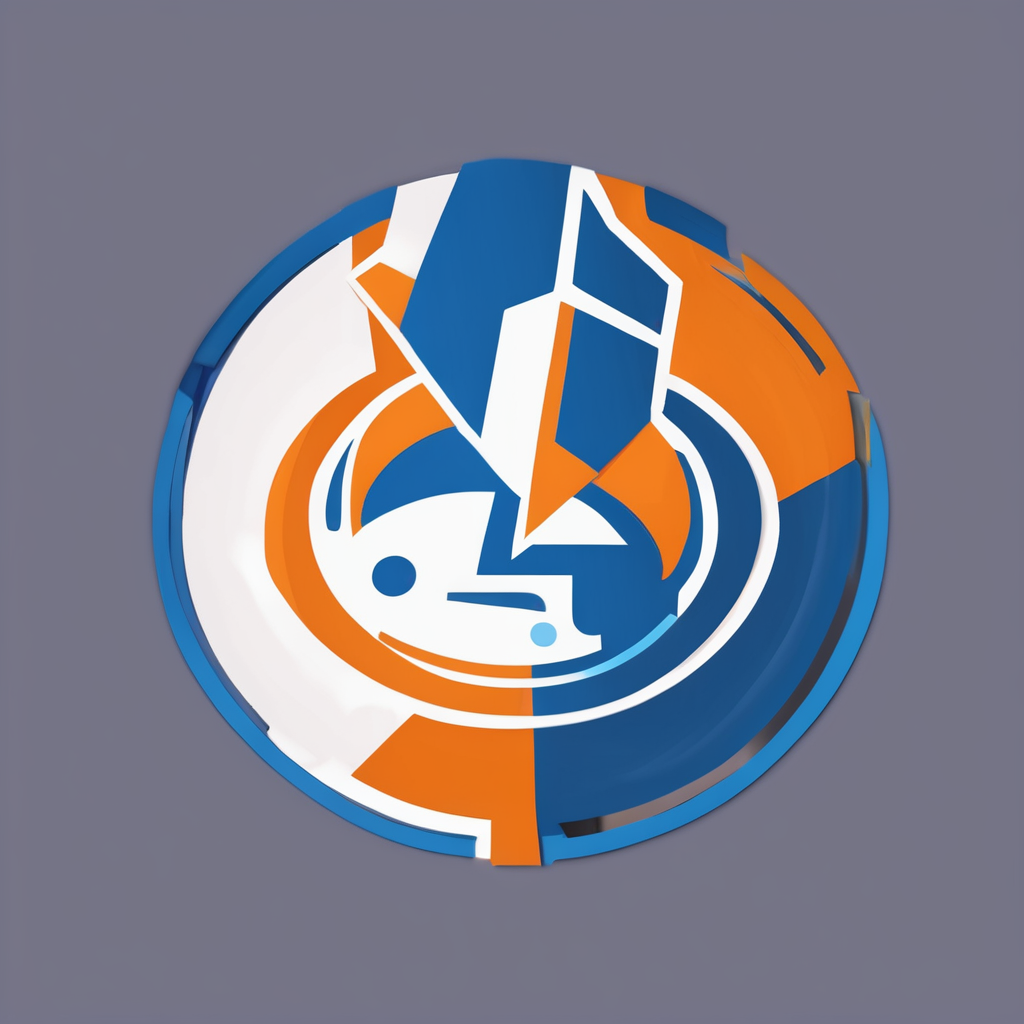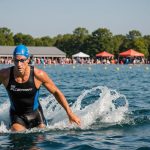Unlocking Peak Performance: The Ultimate Stroke Technique Handbook for Competitive Swimmers
Understanding the Foundations of Swimming Technique
When it comes to competitive swimming, the difference between a good swimmer and a great one often boils down to technique. A well-refined stroke technique can significantly enhance a swimmer’s performance, reducing drag, increasing speed, and conserving energy. Here, we’ll delve into the essential components of swimming technique and how to optimize them for various events.
Body Position
The foundation of any swimming stroke is the body position. Maintaining a horizontal body position in the water minimizes drag and allows for more efficient movement. This is particularly evident in the case of Léon Marchand, a quadruple Olympic champion known for his exceptional technique, especially in his ability to stay almost entirely underwater during his dives and turns, covering significant distances without expending much energy[1].
Have you seen this : Top pistol gel blasters for thrill-seekers and fun lovers
- Streamlining: Keeping the body as straight as possible reduces drag. This involves engaging the core muscles to maintain a stable and streamlined position.
- Head Position: The head should be in a neutral position, with the ears aligned with the shoulders. This helps in maintaining a horizontal body line.
- Hip Alignment: Ensuring the hips are aligned with the shoulders and ankles is crucial for efficient propulsion.
Breathing Technique
Breathing is a critical aspect of swimming, as it affects both the body position and the overall stroke efficiency.
Breathing Mechanics
- Timing: The timing of breaths should be synchronized with the stroke cycle to avoid disrupting the body position. For example, in the freestyle, breaths are typically taken every 2-3 strokes.
- Depth: Breaths should be taken with the mouth and nose out of the water just enough to inhale and exhale. Deep breaths can cause the hips to drop, increasing drag.
- Turns and Dives: During turns and dives, swimmers should focus on quick, efficient breaths to minimize time spent out of the streamlined position.
Stroke-Specific Techniques
Each swimming stroke has its unique technique requirements, but there are some common principles that apply across all strokes.
Freestyle (Front Crawl)
- Arm Movement: The arms should enter the water with the fingertips first, then pull back in a high-elbow catch. This maximizes propulsive force while minimizing drag.
- Kick: A flutter kick with a narrow profile helps maintain the body position and adds to the propulsive force.
- Breathing: Breaths are taken to the side, keeping the body in a straight line.
Backstroke
- Arm Movement: The arms move in a wide, circular motion with the palms facing downwards. This ensures a consistent and powerful pull.
- Kick: A flutter kick similar to the freestyle, but with the body on its back.
- Body Position: The body should be flat on the back, with the ears, shoulders, and hips aligned.
Breaststroke
- Arm Movement: The arms move in a circular motion, with the hands pulling outwards and then inwards towards the chest.
- Kick: A frog-like kick, where the legs move outward and then inward.
- Breathing: Breaths are taken forward, with the head lifting out of the water.
Butterfly
- Arm Movement: The arms move in a wide, dolphin-like motion, with the hands entering the water in front of the head.
- Kick: A dolphin kick, where the legs move together in a wave-like motion.
- Breathing: Breaths are taken forward, similar to the breaststroke.
Training Strategies for Improving Technique
Drills and Exercises
Incorporating specific drills into your training plan can help improve and refine your technique.
- Kicking Drills: Kicking with a kickboard helps strengthen the legs and improve the kick technique.
- Pulling Drills: Using a pull buoy to focus on arm movement without the kick can help improve arm technique and strength.
- Fingertip Drills: Drills that focus on entering the water with the fingertips first can help reduce drag and improve the catch.
Video Analysis
Using video analysis tools, such as those available on an Apple Watch or dedicated swimming apps, can provide valuable insights into your technique. This allows you to identify areas for improvement and track your progress over time.
Strength and Conditioning
Building strength and endurance through dryland exercises can significantly enhance swimming performance.
- Core Strength: Exercises like planks and Russian twists help maintain a stable body position in the water.
- Upper Body Strength: Push-ups, pull-ups, and dumbbell rows can improve arm strength and endurance.
- Leg Strength: Squats, lunges, and leg press can enhance kick power.
Competitive Swimming Events and Technique Adaptations
Different events require different technique adaptations to optimize performance.
Sprint Events (50m, 100m)
- High Stroke Rate: Sprinters need to maintain a high stroke rate to generate maximum speed.
- Powerful Kicks: A strong kick is crucial for generating propulsive force in short distances.
- Streamlined Body Position: Minimizing drag is essential for maintaining top speed.
Middle Distance Events (200m, 400m)
- Balanced Stroke Rate: A balanced stroke rate that combines speed with endurance is necessary.
- Efficient Breathing: Breathing technique should be efficient to avoid disrupting the body position.
- Consistent Kick: A consistent kick helps maintain a stable body position and adds to the propulsive force.
Long Distance Events (800m, 1500m)
- Low Stroke Rate: A lower stroke rate helps conserve energy over longer distances.
- Efficient Body Position: Maintaining a streamlined body position is crucial for reducing drag and conserving energy.
- Building Endurance: Training should focus on building endurance through long swims and interval training.
The Role of Heart Rate and Recovery in Swim Training
Monitoring heart rate and incorporating recovery strategies are vital for optimizing training and performance.
Heart Rate Monitoring
Using tools like an Apple Watch to monitor heart rate can help swimmers gauge their intensity levels and adjust their training accordingly.
- Zone Training: Training in specific heart rate zones can help improve cardiovascular fitness and endurance.
- Recovery Monitoring: Monitoring heart rate during recovery can help swimmers ensure they are adequately recovering between sessions.
Recovery Strategies
- Cool Downs: Gradually reducing intensity after a hard swim helps the body recover.
- Stretching and Foam Rolling: These help in reducing muscle soreness and improving flexibility.
- Nutrition and Hydration: Proper nutrition and hydration are essential for recovery and performance.
Joining a Swimming Club: The Benefits for Competitive Swimmers
Joining a swimming club can provide numerous benefits for competitive swimmers, from technical improvement to mental motivation.
Technical Improvement
- Qualified Coaches: Clubs offer access to qualified coaches who can provide personalized feedback and correct technique[3].
- Structured Training: Clubs provide structured training plans that help swimmers improve their technique and performance.
Motivation and Discipline
- Regular Training: Committing to regular training sessions helps build discipline and motivation.
- Community Support: Training with other dedicated swimmers creates a motivating environment that pushes swimmers to perform at their best.
Measurable Progress
- Competitions: Participating in club-organized competitions provides opportunities to measure progress and set new goals[3].
- Records and Achievements: Tracking personal records and achievements helps swimmers see their improvement over time.
Unlocking peak performance in competitive swimming is a multifaceted endeavor that involves refining technique, adapting to different events, and incorporating effective training strategies. By focusing on body position, breathing technique, and stroke-specific mechanics, swimmers can significantly improve their performance. Additionally, joining a swimming club and utilizing tools like video analysis and heart rate monitoring can provide the necessary support and feedback to reach the highest levels of competitive swimming.
Practical Insights and Actionable Advice
- Focus on Technique Drills: Incorporate specific drills into your training to refine your technique.
- Use Technology: Utilize tools like video analysis and heart rate monitoring to track your progress and adjust your training.
- Join a Swimming Club: Benefit from qualified coaches, structured training, and a motivating community.
- Prioritize Recovery: Ensure adequate recovery through cool downs, stretching, and proper nutrition.
By strictly focusing on these aspects of swimming technique and training, competitive swimmers can improve their performance, swim faster, and achieve their goals in the water.
Detailed Bullet Point List: Key Components of Swimming Technique
- Body Position:
- Maintain a horizontal body position
- Engage core muscles for stability
- Align head, shoulders, and hips
- Breathing Technique:
- Synchronize breaths with stroke cycle
- Take shallow breaths to avoid disrupting body position
- Practice breathing during turns and dives
- Stroke-Specific Techniques:
- Freestyle: High-elbow catch, flutter kick
- Backstroke: Wide arm movement, flutter kick
- Breaststroke: Circular arm movement, frog-like kick
- Butterfly: Dolphin-like arm movement, dolphin kick
- Training Strategies:
- Incorporate drills and exercises
- Use video analysis tools
- Focus on strength and conditioning
- Heart Rate and Recovery:
- Monitor heart rate during training
- Incorporate cool downs and stretching
- Prioritize nutrition and hydration
Comprehensive Table: Comparison of Swimming Strokes
| Stroke | Arm Movement | Kick | Breathing | Body Position |
|---|---|---|---|---|
| Freestyle | High-elbow catch, pull back | Flutter kick | Side breathing | Horizontal body position |
| Backstroke | Wide circular motion | Flutter kick | No breathing restriction | Flat on back, ears, shoulders, hips aligned |
| Breaststroke | Circular motion, hands pull outwards and inwards | Frog-like kick | Forward breathing | Body slightly inclined forward |
| Butterfly | Dolphin-like motion, hands enter in front of head | Dolphin kick | Forward breathing | Body undulates, horizontal position |
By understanding and mastering these components, swimmers can significantly enhance their performance and achieve success in competitive swimming.











